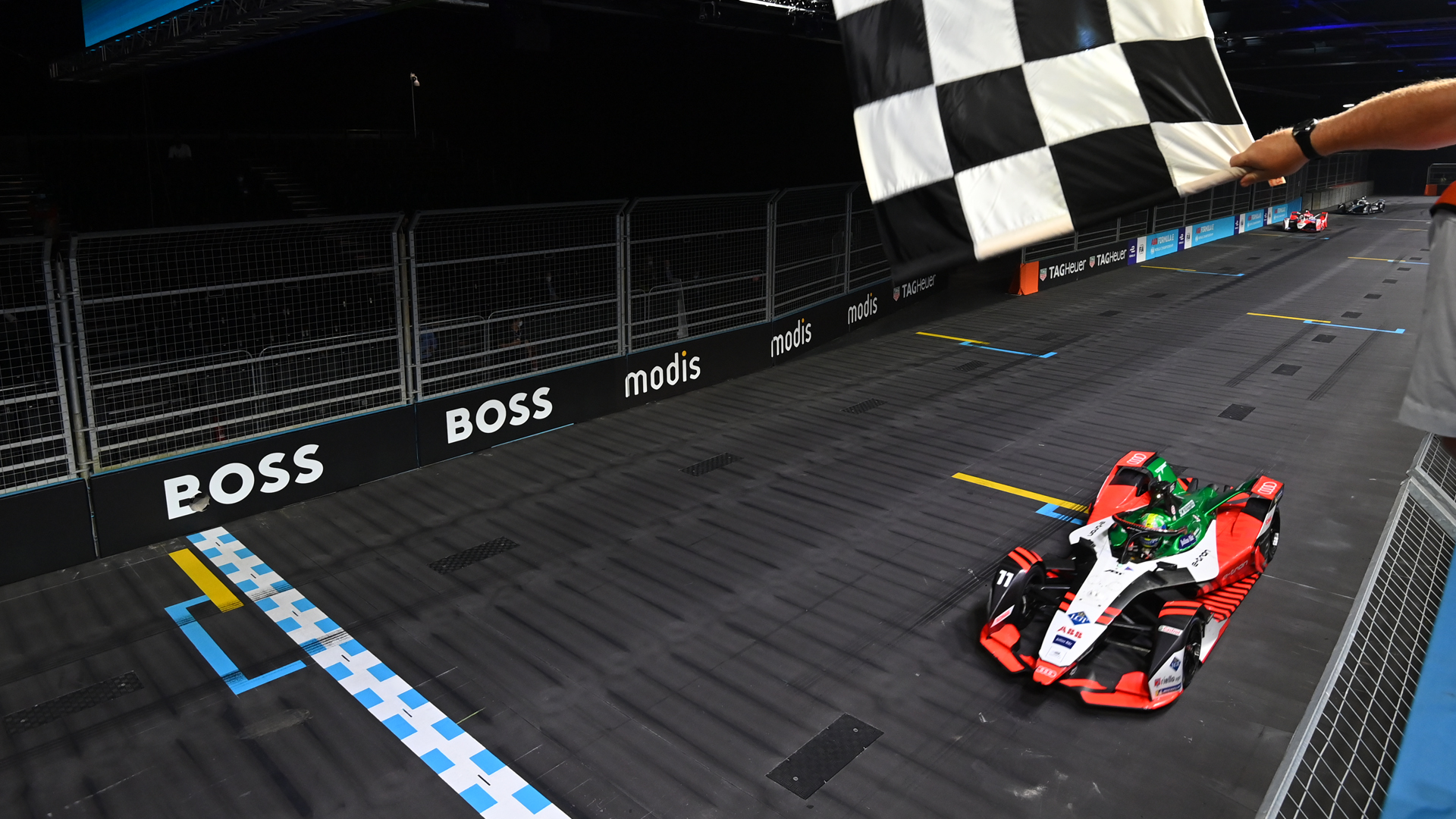

Receiving a black flag is the kind of thing you’re warned about if you go to a rental karting center. If you keep crashing or you don’t pay attention to the instructions about yellow flags, they’ll pull you off the track for the rest of the grid’s safety and general fun. In a professional motorsport context, the drivers know what they’re doing; even if you, say, ram into your title rival behind a safety car during a moment of rage, getting told you’re out of the race altogether is unusual.
They’re so unusual that drivers being black flagged, over 72 years of Formula One, is rare enough you can make pretty short lists of them. Formula E had never had a driver break the rules so badly they got shown one, in eight years of racing and plenty of post-race disqualifications. But Lucas di Grassi got shown the black flag on the final lap of the London ePrix yesterday for a weird infringement of basically not being told he had a totally different penalty. He crossed the line honestly believing he’d won the race.

Here’s how it went down: racing around the tight, twisting, 22-corner London ePrix track, incidents were pretty much a given. With the first safety car coming less than five minutes after the lights went out, more were basically inevitable. When André Lotterer put Antonio Felix da Costa in the wall down the start/finish pit straight, Da Costa’s Techeetah ended up beached at the pit exit end, which meant the subsequent safety car had to crawl through the indoor section of the indoor-outdoor track.
In Formula E, you’re allowed to pit under a safety car so long as you stop at your garage. It’s so you can make repairs if you need to but you can’t use the pit lane as a shortcut. Ninety-nine percent of the time at London, it wouldn’t be—running alongside the track, the pit speed limit would normally slow you down compared to other cars, even when they’re driving behind a standard safety car.
Because of where Da Costa’s car was, though, Di Grassi took a chance on it. That managed to pay off and he, completely legally, emerged from the pit lane just ahead of the train of cars behind him, having stopped at the Audi garage on his way through the pit lane. Or so he thought.
In reality, Di Grassi hadn’t quite come to a complete halt at the garage, so he was given a drive-through penalty. The move was outrageous but totally legal if he had stopped. Because normally it wouldn’t give you an advantage to go through this specific pit lane rather than staying behind the safety car, it hadn’t really been a loophole in the rules so much as a bizarre, one-in-a-thousand moment that, somehow, Di Grassi and Audi had pre-identified might be worth the risk.
It wasn’t. Di Grassi was given a drive-through penalty for not stopping on his earlier drive-through. But then Audi didn’t tell its driver that he’d been given one, so he didn’t come in. In motorsport, you’ve only got a short time to communicate and respond to a penalty order or you get shown the black flag.
Lucas di Grassi explained to The Drive after the race that the team never told him about the penalty, so he had no idea the black flag was for him. “I was not aware of the penalty until after the race. It was the team’s decision not to communicate. And I have to do what the team kind of tells me. So I was driving for the win and I thought I really won the race when I finished it.”
The wild thing is, it’s not driving through the pit lane and managing to gain six places behind the safety car that Di Grassi was penalized for. It actually boils down to a rather odd reason—paint.
The ExCel Center’s huge hangar—that 20 percent of the track ran through—had been resurfaced in the track areas, including the outside portion of the pit lane. But the inside bit of the pit lane still had the exhibition center’s shiny floor, which was what Di Grassi failed to properly stop on. If he’d reached a dead stop, then he would have been fine.
We looked before, but that move would not have worked if the safety car was faster. Otherwise, you lose positions too. You can do it, but you have to have the chance of losing positions as well. It was never guaranteed to work out in Di Grassi’s or Audi’s favor.

Looking resigned, after a second visit to the stewards over the incident, Di Grassi told me, “In the end, the data shows that although the wheels are locked, I was sliding a bit.
“I feel very sorry because it was a clever move and I missed a win, another one because of such a small detail. And look, I think everybody is trying to be clever and try to find ways. And so we are obeying the rules a hundred percent. So if something like this shows up again in any other area, I think if we don’t use it, somebody else will use it.”
Other competitors weren’t impressed by him snatching the lead, seeing as managing to overtake six cars under caution is usually the sort of thing that’s frowned on. But that wasn’t even what Di Grassi got in trouble for, in the end.
Got a story tip? Mail me on hazel@thedrive.com